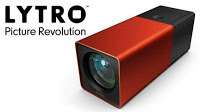 With a conventional camera, one has to focus first and then take the picture. With Lytro, however, the process is reversed, giving much more possibilities in terms of how one approaches each shot…
With a conventional camera, one has to focus first and then take the picture. With Lytro, however, the process is reversed, giving much more possibilities in terms of how one approaches each shot… The device, which looks a bit like a small telescope, was created by Malaysian Ren Ren, who discovered the new technology when he did his PhD in computer science at Stanford University in California.
He founded the California-based Lytro company of the same name and has already started selling the new product, which has already received very positive reviews internationally.
The camera uses so-called "light field technology" that allows the focal point of a digital image to change after it is captured. The user can display the photo taken on their computer screen and then change the focal point from one object or person in the foreground to another in the background. The camera achieves this because it uses powerful sensors that absorb much more light than a conventional camera.
Ng describes Lytro's photos as "live images", precisely because they allow them to be "manipulated" afterwards. In fact, this special feature of the images accompanies them even when the user "uploads" them on the internet and generally shares them electronically, so anyone else is able to take advantage of the change of focus on the same photo, on his computer, laptop, on his tablet or on his "smart" mobile.
There are currently two models of camera available in the user's pocket: one of 8 GB that can take up to 350 photos and costs around $ 400 and one of 16 GB that can take up to 750 photos and is priced close to $ 500.
On the downside of the camera, various analysts have pointed out that it creates large digital photo files that can only be imported to a Macintosh computer with the software (although Lytro soon promised a model that would work with computers running Windows), while also the camera does not have extra filters and it is impossible to edit its photos from Photoshop.
Source: Proho.gr
